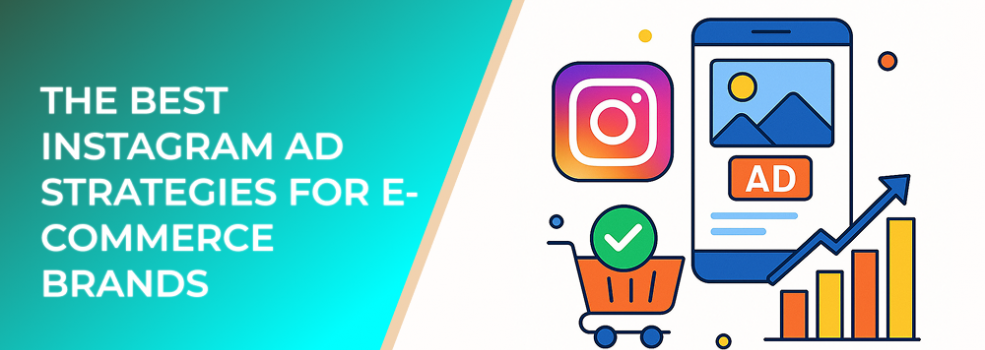Instagram is built for visual discovery, making it a natural fit for online shops. Over 70% of shoppers look to Instagram for product discovery, and more than 130 million users tap on shopping posts every month. If you sell online, the platform is not just optional—it’s essential.
But to get consistent sales, e-commerce brands must move beyond boosting posts and adopt strategies designed to maximize conversions.
Strategy 1: Use Shopping Ads to Shorten the Path to Purchase
Shopping Ads let you tag products directly in your visuals. When users tap, they can view details and purchase seamlessly.
Why it matters: Each extra click can reduce conversions by up to 20%, so minimizing friction boosts sales.
Strategy 2: Retarget Warm Audiences Aggressively
Not everyone buys on the first visit. Retarget people who:
-
Viewed products but didn’t purchase.
-
Added to cart but abandoned checkout.
-
Engaged with your Instagram profile.
Useful stat: Retargeting campaigns often drive conversions at 20–50% lower cost than cold campaigns.
Strategy 3: Test Reels Ads for Lower CPMs
Reels mimic organic content and often deliver strong engagement. They’re cheaper, too: many e-commerce brands report 10–25% lower CPMs compared to feed ads.
Pro tip: Keep videos short (15–30 seconds) with a clear product showcase in the first 3 seconds.
Strategy 4: Use Dynamic Product Ads (DPAs)
Dynamic Product Ads automatically show users the exact products they viewed on your site. It’s like personalized remarketing at scale.
Why it matters: Personalized product reminders can increase click-through rates by 2–3× compared to static retargeting ads.
Strategy 5: Incorporate UGC (User-Generated Content)
UGC-style ads, like customer reviews or unboxing videos, often outperform polished brand creatives.
Useful stat: UGC ads can cut cost per acquisition by 15–35% in e-commerce campaigns.
Strategy 6: Combine Broad Targeting With Strong Creative
Instagram’s algorithm has improved dramatically. Instead of stacking dozens of interests, run broad targeting with strong creatives.
Why it matters: Broad targeting often reduces CPMs and speeds up the learning phase, especially when your pixel data grows.
Strategy 7: Create an Always-On Retargeting Layer
Successful e-commerce accounts don’t turn off retargeting. Keep:
-
7-day abandoned cart campaigns.
-
14-day product viewers campaigns.
-
30-day Instagram engager campaigns.
Why it matters: Always-on retargeting maintains consistent sales flow, turning browsers into buyers.
Strategy 8: Optimize Landing Pages for Speed and Mobile
Over 80% of Instagram traffic is mobile. If your landing page takes more than 3 seconds to load, you risk losing up to 40% of potential buyers.
Pro tip: Use clear product pages with simple CTAs and fast checkout options.
Strategy 9: Refresh Creatives Every 2–3 Weeks
Ad fatigue hits e-commerce fast. Engagement and CTR often drop after the same creative runs too long. Introduce new visuals or rotate formats every few weeks to maintain performance.
Strategy 10: Track Beyond Clicks
Focus on conversions, ROAS, and repeat purchase rates. Brands that track only clicks risk over-investing in campaigns that don’t drive revenue.
Useful Statistics Recap
-
70%+ of shoppers use Instagram for product discovery.
-
130M+ users tap on shopping posts monthly.
-
Retargeting cuts costs by 20–50%.
-
Reels ads deliver 10–25% lower CPMs.
-
UGC creatives reduce CPA by 15–35%.
-
Mobile page loads over 3s lose 40% of buyers.
Where to go next on LeadEnforce
Strengthen your campaigns with these articles:
-
Facebook Ads Not Converting: How To Fix It — troubleshoot underperforming campaigns.
-
Meta Ad Campaign Objectives Explained: How to Choose the Right One — set clear campaign goals.
-
How to Define a Target Audience for Marketing: a Step-by-Step Guide — refine your targeting for Instagram and Facebook.
Final word
Instagram ads give e-commerce brands a powerful way to convert product discovery into real revenue. With shopping ads, retargeting funnels, and engaging creatives, you can scale beyond likes and followers and drive consistent sales growth. Start with these strategies, test carefully, and focus on metrics that truly matter.

